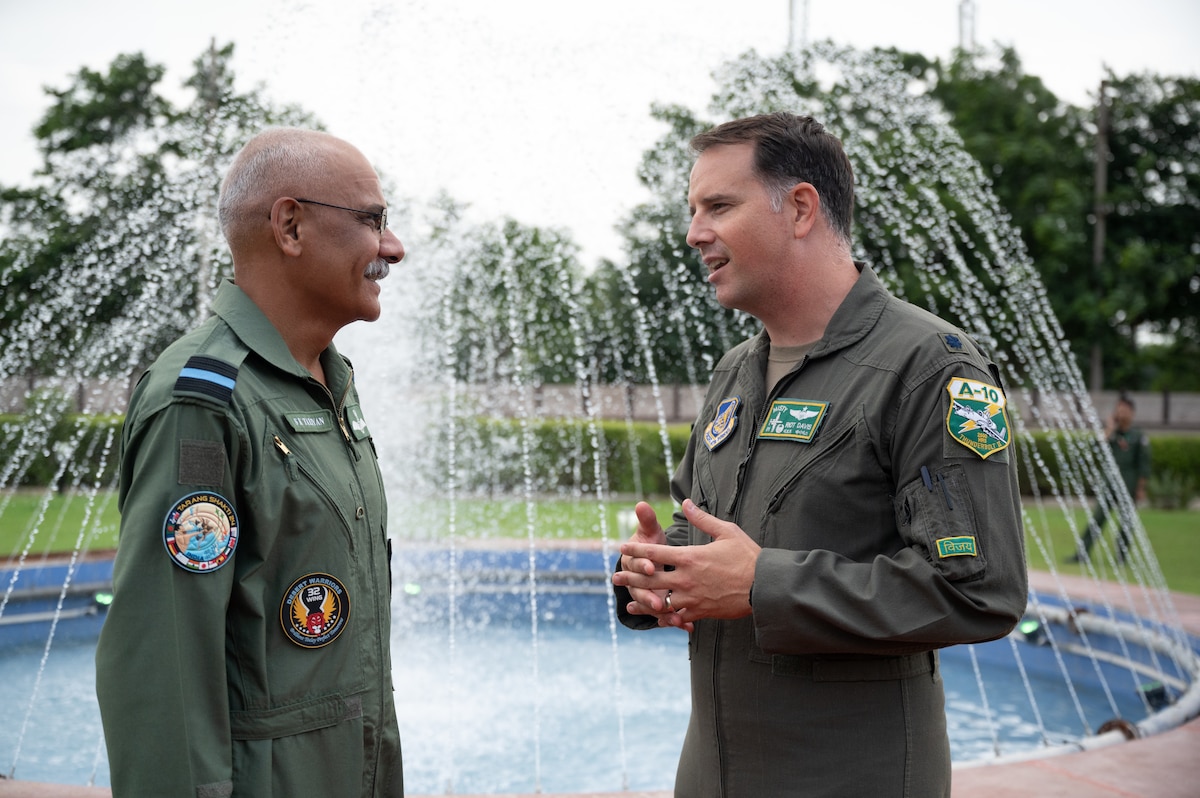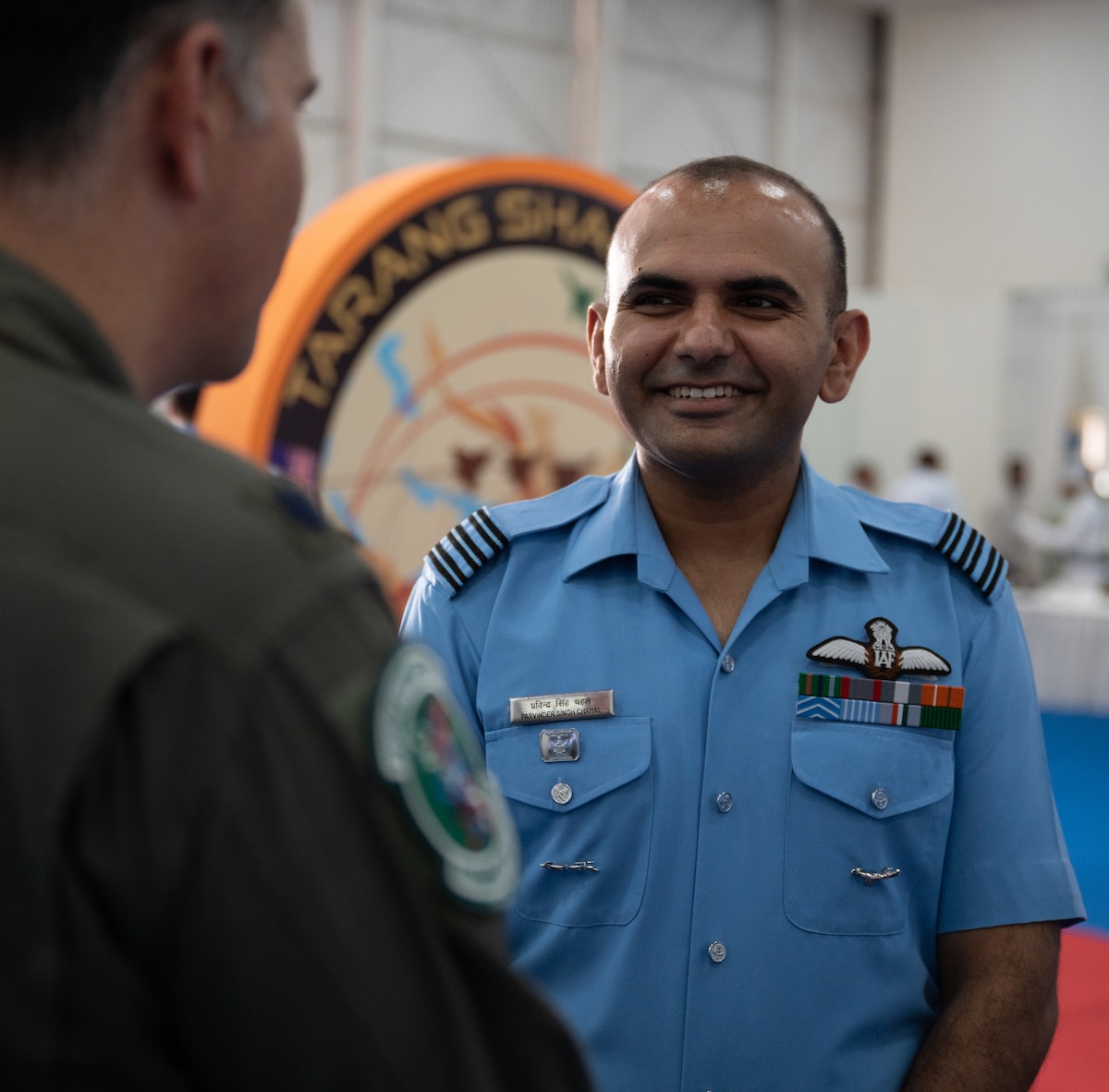Tarang Shakti 24, India's largest multinational exercise involving 10 participating nations and 18 observers, lived up to its namesake from Aug. 29 to Sept. 14, at Jodhpur Air Force Station, Rajasthan.
Throughout large force tactical employment operations, cultural events, and learning opportunities, Airmen from the 28 nations embodied Tarang, which means ripple, and Shakti, the name of an Indian deity symbolizing the collective power of life force.
"All of these platforms and exercises provide us a chance to connect with each other," said India Air Force Air Commodore S.K. Taliyan, 32nd Wing commanding air officer. "I believe it is not so much the interoperability of networks or platforms - more importantly, it is the interoperability of people, and that is the key takeaway when you do this kind of exercise."
While the exercise presented opportunities for close air support missions, air interdiction, reconnaissance, deterrence, and special forces operations, Taliyan emphasized the importance of getting to know one another through subtle interactions like cultural events. These moments, he said, help build the foundation of trust. For this reason, the IAF planned events such as an airshow, cultural night, yoga and other exchanges to foster connections outside of the battle space.
Just as the exercise name implies, that outlook of connecting through small nuances rippled as multinational Airmen came together to build opportunities outside of planned exercise events, gaining a stronger understanding of how each other operates.
Senior Airmen Caleb Kindler and Staff Sgt. Kyle Townzen, both U.S. Air Force joint terminal attack controllers with the 607th Air Support Operations Group, and U.S. Army Sgt. 1st Class Michael Murphy, a 3rd Battalion Coordination Detachment ground liaison officer, participated in the exercise as part of the 25th Fighter Squadron's total force package.
They worked closely with their A-10 Thunderbolt II contingent from Osan, South Korea, alongside Indian Air Force special forces personnel. The team had planned missions involving exchanging close air support procedures with the IAF, but they found it equally important to build relationships elsewhere, whether by sharing meals with international partners or creating new experiences to better understand each other's operational methods.
"Experience teaches a lot; unless we go and experience the terrain and surroundings, we won't learn much," said IAF Flight Lt. Ranjit Uoadhyay, 609th Garud Flight commanding officer. "Theory is one part, but practical experience gives us a lot more understanding."
Joint teams like the air controllers not only conducted their primary mission, training in controlling one another's aircraft, but also made plans to observe how the IAF special forces team operates through events like jump training and weapons familiarization.
"There's this innate fear of the unknown, but this exercise is a great opportunity for us to train and ultimately see that we're all just people trying to figure things out," Murphy said. "We're all looking to make things work as best we can, so when training opportunities like this present themselves, it helps to strengthen those bonds and makes the world feel a bit smaller because we're all in this together."
For Murphy's deployed commanding officer, Lt. Col. Justin Davis, 25th Expeditionary Fighter Squadron commander and deployed forces commander in India, that togetherness has rippled for more than 82 years. Davis volunteered his squadron for TS24 for several reasons that would amplify personnel capabilities, but he also found this a unique opportunity to honor history.
"The U.S. F-16s, A-10s, and KC-135 contingents came here to do three things," Davis said. "First, to build upon the strong strategic partnerships we have. Second, to build tactical and professional growth for our pilots. And third, particular to my squadron, the 25th."
Davis explained that the 25th's lineage with India dates back to 1942 when the unit moved to Assam, India. That same year, the IAF's 4th Squadron was born. The squadrons flew together for two years during World War II.
"We have this strong heritage and still use the name 'Assam Draggins' as our mascot," Davis said. "We built a very close bond between our two squadrons and still share common interests."
Now, those common interests are reflected through exercises like Tarang Shakti, which strengthen a collective resolve to sustain a free and open Indo-Pacific.
"This is a huge learning opportunity for our pilots to train against types of airplanes they've never seen before; it helps them practice what they have learned up to this point," Davis said. "We can do close air support anywhere, but this was also a great opportunity for our JTACs to train with the Indian special forces. It's a new location and a new country for them, so it's really unique."
Throughout TS24, the IAF and their invited guests who spoke at the exercise's cultural and mission-focused events shared that the point of TS24 is to show that each participating nation is already connected. The exercise merely provides a tangible source to see and feel that connection, bridging the 28 nations to sustain a free and open Indo-Pacific, just as the 25th did in 1942.









